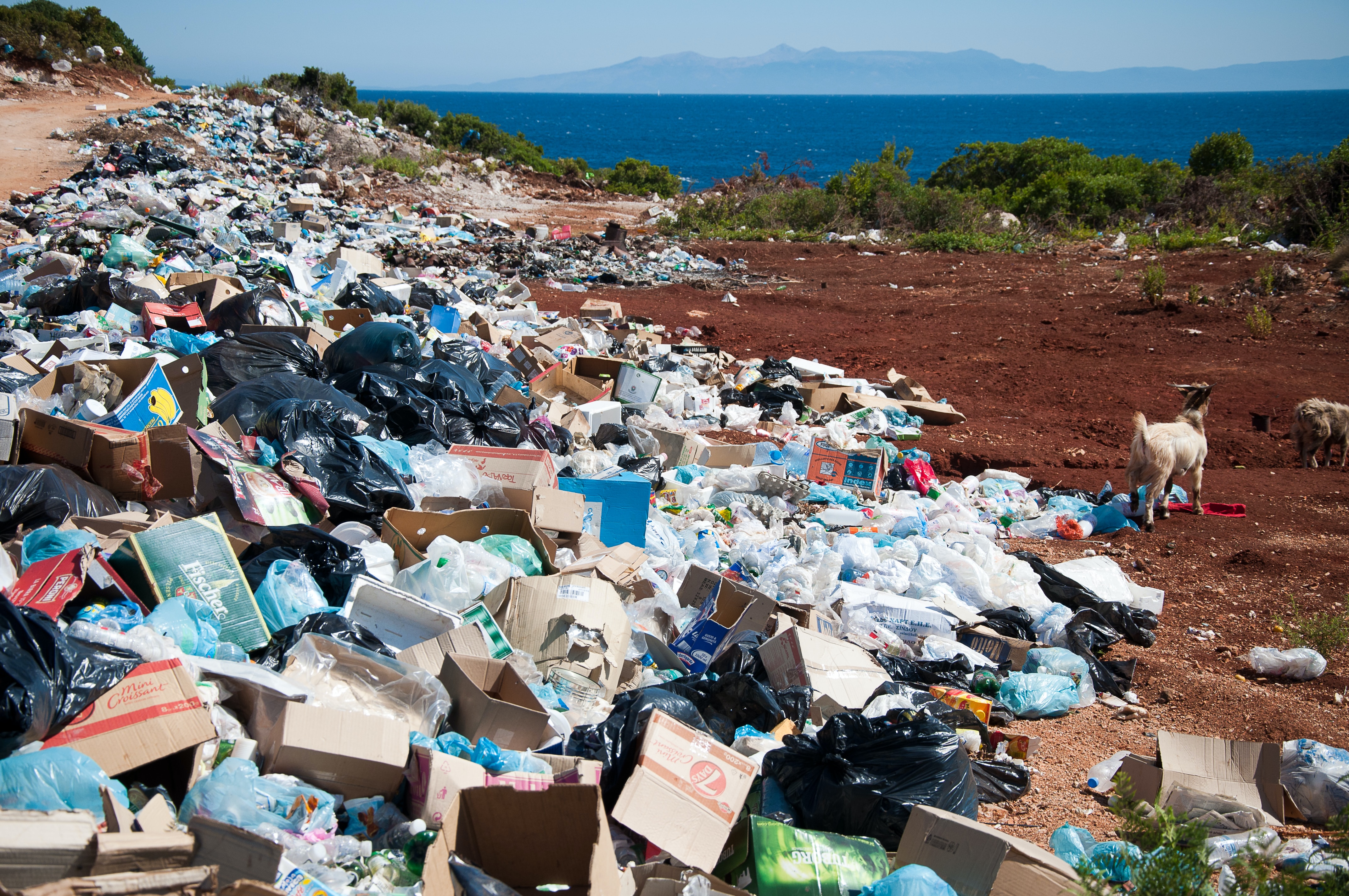In the first article in this series, we discussed how humanity is affecting the environment. This week, we will discuss the problem of plastic—a nonrenewable resource that has become integral in our lives but comes at a staggering cost to our health and environment. What can we do to manage plastic waste?
Plastic is obtained from fossil fuels such as petroleum and methane gas, which are extracted from the Earth in an energy-intensive process, including drilling, extraction, transportation, and refining. The entire lifecycle of plastic contributes high amounts of greenhouse gases into the atmosphere, intensifying the impact of climate change.
We are often led to believe that plastic is recyclable; however, most plastic is not recycled. Globally, only 9% of plastic waste is recycled, while the majority ends up in landfills and some leaks into the environment.1
What's more shocking is that what we refer to as plastic recycling is often actually downcycling, making lower-quality plastic products from the "recycled" plastic. Downcycling requires a lot of energy, leading to a gradual loss of materials. Even when done effectively, downcycling is only temporary, and the material will eventually become waste. This unsustainable cycle perpetuates the plastic problem.2
Because most of our plastic ends up in landfills, we need to be aware that landfills are often located near low-income neighborhoods and communities of color, leading to more health risks for them. A study in New York indicated a 12% increased risk of congenital malformations in children born to homes within one mile of a hazardous waste landfill site. Additionally, the creation of landfills typically means destroying natural habitats for wildlife. With over 3,000 active landfills in the United States, nearly two million acres of habitat have been lost.3
In the U.S., household plastic waste makes up an overwhelming percentage of landfills. Statistics show that in 2021, at least 85 percent of the estimated 40 million tons of municipal plastic waste was sent to landfill sites. Approximately 90 percent of plastic is not recycled, and 40 percent is discarded after a single use. Everyday items like water bottles, toothbrushes, shampoo containers, grocery bags, and food packaging contribute to landfill waste.4
Boulder county landfill, Colorado.

The non-biodegradable nature of most plastics means they will be around for hundreds of years after being discarded. Larger plastic items, like bags and straws, endanger marine life through entanglement, while microplastics and minuscule particles inflict harm on animals by causing damage to digestive and reproductive systems.
Alarmingly, humans ingest these microplastics when consuming seafood. They have even infiltrated everyday consumables like honey, salt, and sugar. The plastics commonly used in bottles and food containers contain chemical additives associated with detrimental health effects like cancers, congenital disabilities, and immune system suppression in humans and wildlife. Thus, plastic is a health concern for all of us.5
The Ellen MacArthur Foundation warns that if plastic pollution maintains its current trajectory, the ocean's plastic mass could exceed that of fish by 2050. Prince Hussain Aga Khan, who has swum alongside marine life like dolphins and sharks, laments the disastrous toll of plastic pollution on oceans. Speaking at the Ocean Conference in Lisbon in 2022, he observed,
"Our oceans have become so clogged up by plastic and other forms of pollution and waste... It is clear to me that we have to act now before it is too late."
While the scale of the problem requires actions such as passing ordinances across cities to ban single-use bags and eliminate styrofoam containers, initiating change can start with reducing single-use plastics or opting for biodegradable alternatives for plates, cups, and cutlery. Carrying a reusable water bottle with a built-in filter can help diminish dependence on disposable bottles. Incorporating reusable cutlery and bags into daily routines also goes a long way.
The Hunza Valley's transformation into Pakistan's first plastic-free district in January 2020 is an inspiring model. The district now penalizes plastic bag use, emphasizing the urgency of curbing plastic waste. Can you lead a similar effort in your city? By choosing sustainability over convenience, we honor the sanctity of creation and inspire others to do the same.
Next week, we will explore harnessing sustainable energy to mitigate the repercussions of climate change.
- Plastic pollution is growing relentlessly as waste management and recycling fall short, says OECD click here
- What Really Happens To Your Plastic “Recycling" click here
- The Hidden Damage of Landfills click here
- Plastic waste in the U.S. - statistics & facts click here
- Plastics cause wide-ranging health issues from cancer to birth defects, landmark study finds click here
References:
- 10 facts about single-use plastic bags. (n.d.). Center for Biological Diversity click here
- A whopping 91 percent of plastic isn't recycled. (n.d.). National Geographic click here
- Fava Fava, M. (2022, May 9). Plastic pollution in the ocean: data, facts, consequences. Ocean Literacy Portal; UNESCO Ocean Literacy click here
- Hunza Valley becomes Asia's first plastic-free zone. (2020, January 28). The.Ismaili click here
- Mwamba, S., & Mlaba, K. (2021, July 16). 12 plastic pollution facts that show why we need to do more. Global Citizen click here
- Turning the tide in favor of action. (2022, June 28). The.Ismaili click here
- Walker, N. (2022, September 19). 'Bag ladies' upcycle plastic bags into bedrolls. NBC 5 Dallas-Fort Worth click here








